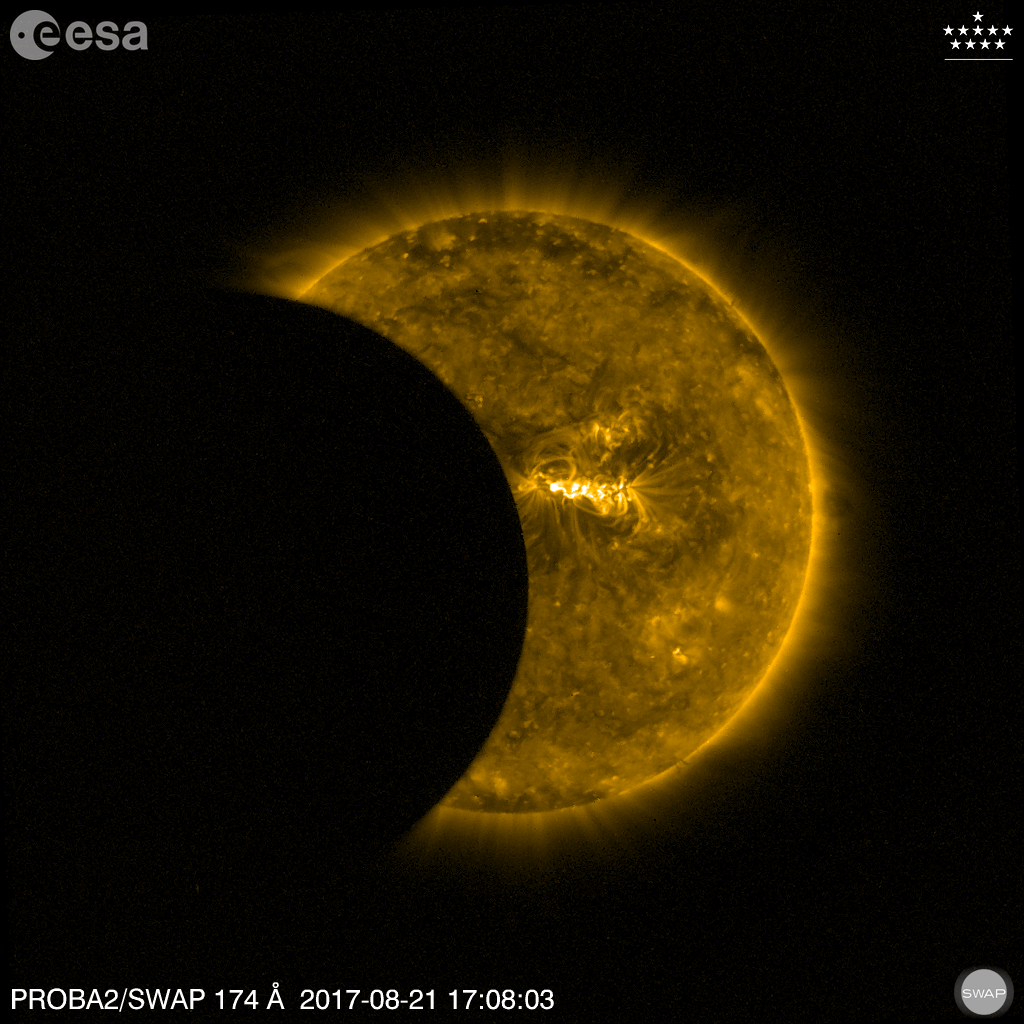Main menu
You are here
PROBA2 Eclipse Observations - 21-Aug-2017

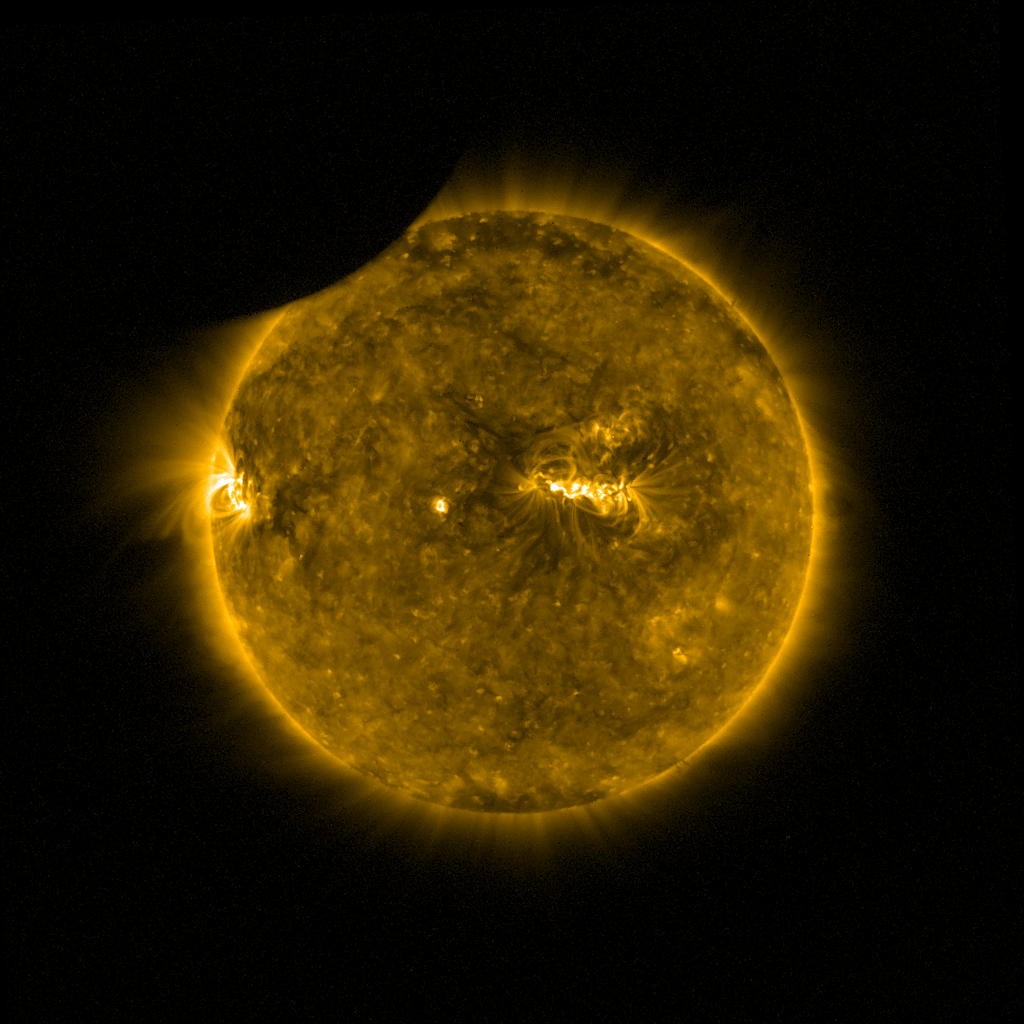
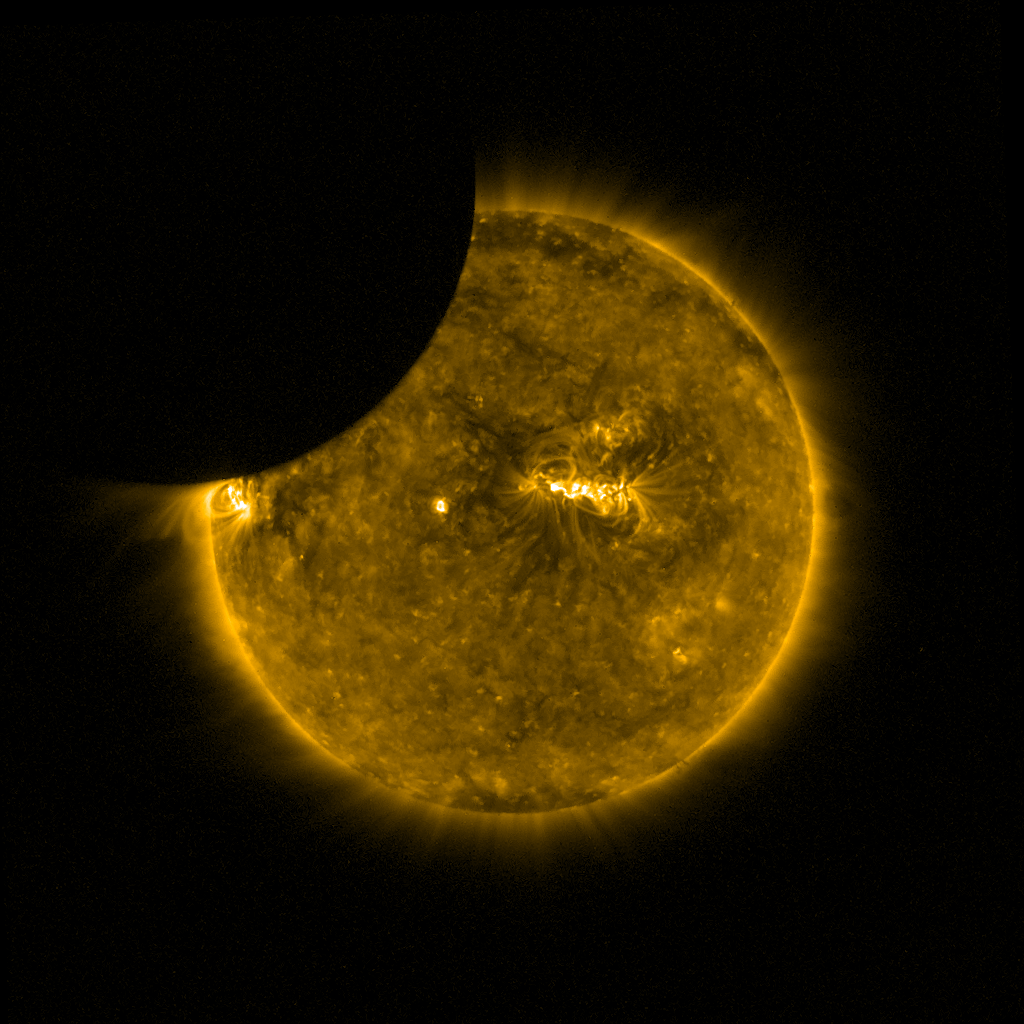
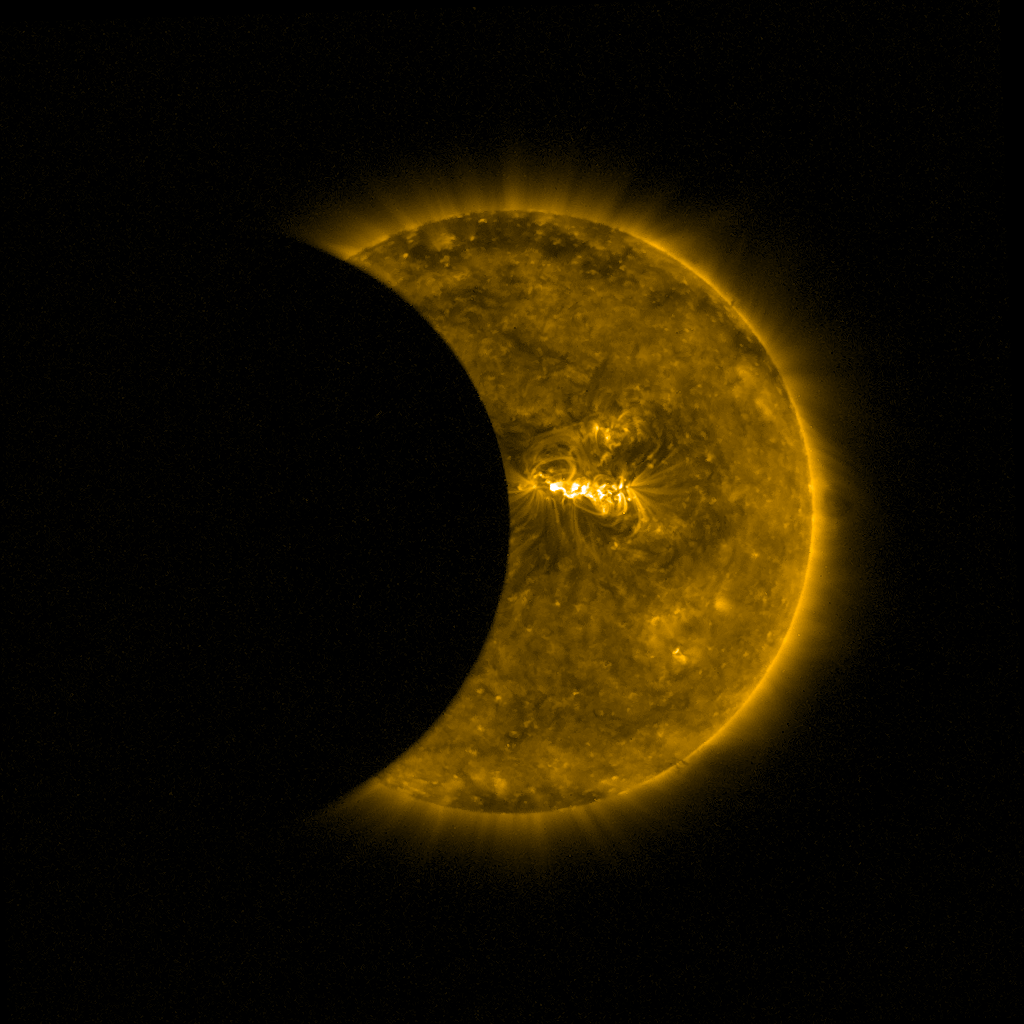
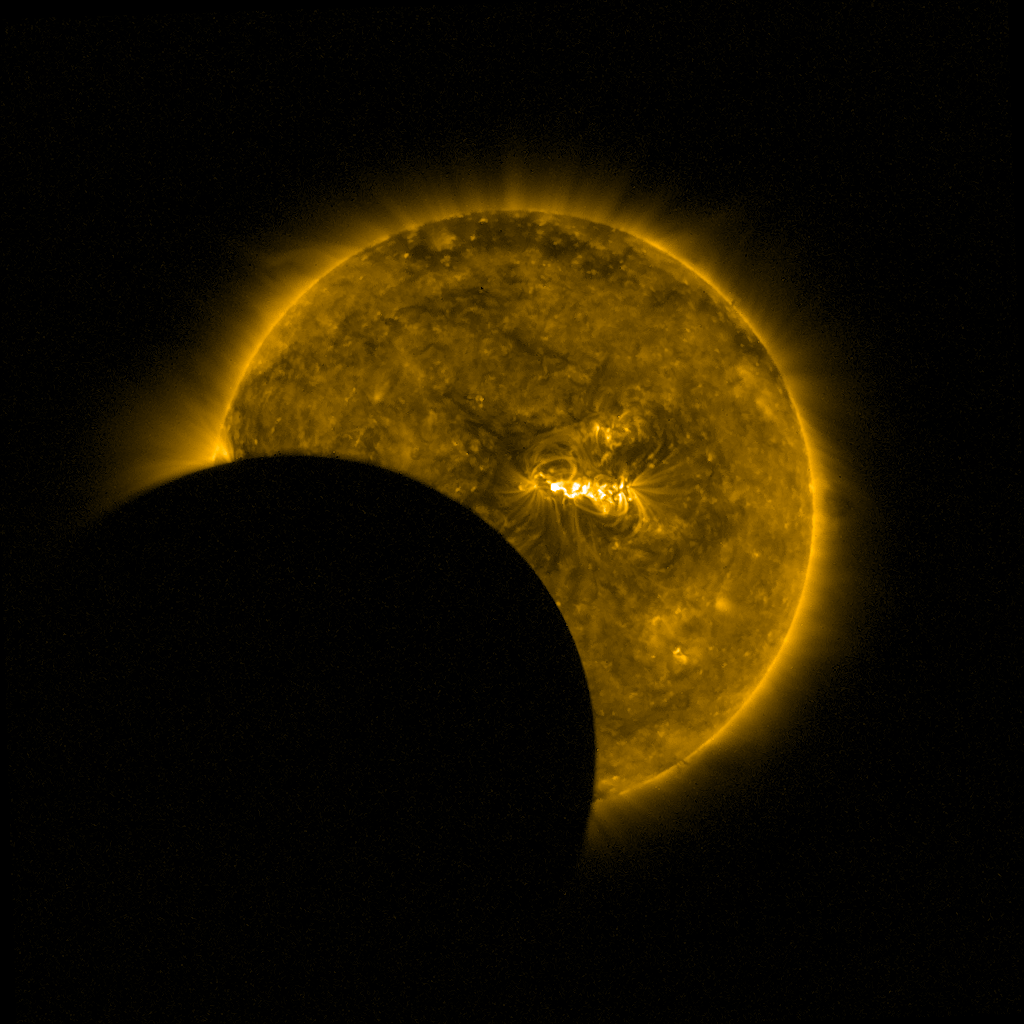


Figure 1. SWAP eclipse image sequence from the first passage of the 2017 August 21 eclipse.
UPDATE: The SWAP images are received from the satellite. Check out the pictures and movies below.
Monday, 21 August 2017 has marked an important celestial event, a total solar eclipse. This was a well observed event, as the eclipse transited the whole of North America. The path of the eclipse can be seen here. People along the path saw a total eclipse, and those outside this path witnessed a partial solar eclipse where the moon covers part of the sun's disk. The eclipse was visible for about two and a half minutes from any location along the path of totality, and first seen on the west coast of the USA in Oregon at around 10:19 am PDT and finally in South Carolina at around 02:44 p.m EDT (more timing information can be found here). For more information on other types of eclipses, visit here.
Solar physicists and space weather monitors (see here for more information) often observe the sun from the vantage point of space, where they can avoid the absorbing and distortional effects of the earth's atmosphere. From this position it's possible to observe the sun in different wavelengths including the extreme-ultraviolet (EUV). ESAs PROBA2 SWAP telescope is one such instrument, which observes the sun in near real time at a wavelength of around 17.4 nanometers. At this wavelength SWAP observes a part of the sun's hot atmosphere (the corona), at a temperature of around 1 million degrees. The series of eclipse images shown in Figure 1 were produced by SWAP during the 21 August 2017 eclipse. By looking at the images at either end of the sequence you will see how complex the sun's atmosphere can be, containing regions of hot bright structures, outlining tightly wound magnetic fields, and darker regions believed to be the source of the sun's solar wind. These bright features can be seen extending off of the edge of the solar disk giving you an impression of the height of the structures in the sun's lower atmosphere. The sun's solar corona, although hot, is very tenuous and is therefore not normally visible from the earth, as the emission from the sun's bright disk dwarfs that of the solar atmosphere. The off-limb solar atmosphere can only normally be seen from earth during a total solar eclipse, when the moon passes between the earth and the sun blocking the bright solar disk allowing us to see the tenuous solar atmosphere. The rareness of these events and the unique observations that can be made, make them interesting and awe-inspiring events, as well as giving us valuable scientific observations.
What did PROBA2 see during the eclipse?
PROBA2 orbits the Earth at a height of approximately 700 km, tracing the dawn-dusk line, Movie 1 shows an animation of PROBA2's projected orbit on 21 August 2017.
Movie 1. Simulation of the path of PROBA2 on 21 August 2017.
As the satellite only takes about 90 minutes to orbit the Earth, it passed through the moon’s shadow several times during the eclipse resulting in PROBA2 observing as many as 3 partial eclipses! This is illustrated in Movie 2, which shows a simulation of what PROBA2 was expected to see on 21 August 2017. At the beginning of the movie you can also spot the moon passing through SWAP's field of view without touching the solar disk. Movie 2. Simulation of the partial eclipses viewed by SWAP. Movie 3 shows the observations of the eclipse made by SWAP on August 21. In this movie we indeed see the three partial eclipses that were predicted. The first passage of the moon in the field of view, where the solar disk is not occulted, is hard to see in these images. Note also that the speckling at the end of the movie is not caused by a problem with the SWAP instrument. It is the result of energetic particles interacting with the detector, a known effect of the activity of our sun. Movie 3. Observations of the partial eclipses viewed by SWAP. As with previous eclipses the PROBA2 team supported ground based astronomers, providing space based contextual images of the Sun. Below we can see a composite image of an eclipse observed by Prof. Jay Pasachoff of Williams College in the United States and a SWAP mosaic image for the 2015-Mar-20 Eclipse (see below for links to previous eclipses observed by PROBA2). To give observers on the ground a broad view of the corona, we generated two wide field-of-view mosaic images: one on the day before the eclipse for planning purposes, and one just before the first partial SWAP eclipse for comparison with the ground-based observations. These wide view mosaics are created using several off-pointing maneuvers towards the corners to increase the field of view. As shown in Figure 2, observers use these images to compare the hot EUV corona we see with SWAP to the visible light corona they observe on the ground during the eclipse. Together, the pair of images can help paint a clearer picture of the density and temperature of the corona at the time of the eclipse, important diagnostic information for scientific researchers. All of our mosaic images are available via the following link: http://proba2.oma.be/Events/2017-Aug-21-SolarEclipse/mosaics/ . During the eclipse, SWAP observed the sun at high cadence. The resulting images and movies can be found here: http://proba2.oma.be/Events/2017-Aug-21-SolarEclipse/ . Science data users can find uncalibrated Level-0 FITS files and calibrated Level-1 FITS files using the SWAP IDL Object. A tutorial on the use of this object is available here . LYRA operated in its nominal mode with its high-quality backup channels active during the entirety of the eclipse (unit3 activated in parallel to the nominal unit2). The acquisition cadence is 20 Hz throughout the whole campaign. The data acquired by the four channel of LYRA when the spacecraft crossed in the eclipse zone for the first time are displayed below. While the two UV channels show a very regular extinction curve, the EUV channels are influenced by the presence of an active region on the east limb (the left side of the solar disk), which is completely occulted by the Moon. Therefore those extinction curves appear twisted. The PROBA2 team had various members on the ground in the US helping with eclipse observation planning and science outreach, including: the LYRA PI, Marie Dominique (Salem, Oregon); PROBA2 technical coordinator, Matthew J West (Salem, Oregon); ESA technical officer, Joe Zender (Wyoba Camp Ground on the Casper Mountain in Myoming). The team supported separate eclipse projects throughout the day. It was anticipated that eclipse chasers, scientists, media and members of the general public would be following our data closely, so we collected all of our results and data products in one place for quick access. SWAP, an Extreme-Ultraviolet solar telescope, observes the solar corona in a passband centered on 17.4 nm. The structures we see in SWAP images have a temperature of approximately 1 million degrees. LYRA, an X-ray/Ultraviolet radiometer observes the total incoming light levels from the Sun in several wavelength bands. More information about these instruments is available here: SWAP | LYRA . We created a first mosaic on August 20, to help ground observers prepare for the eclipse the day after. This image consists of a combination of SWAP observations taken between 2017-08-20 09:58:00 UT and 2017-08-20 11:34:00 UT, with offpoints to the 4 corners. On August 21 we repeated this exercise, right before the first partial eclips took place. This second set of mosaic images was taken between 2017-08-21 15:33:00 UT and 2017-08-21 16:53:00 UT and the resulting mosaic image can be combined with ground based observations as was done in previous eclipse (eg Figure 2). Both mosaic images with the extended field of view are available through this link: http://proba2.oma.be/Events/2017-Aug-21-SolarEclipse/mosaics/ . Figure 3. SWAP mosaic images, taken on August 20 (left) and August 21 (right). SWAP images and movies of the eclipe are provided in three varieties: image only; image with instrument and timestamp text; and image with logos, instrument, and timestamp text. All images and movies should be credited based on the data terms of use information near the bottom of this page. All images taken by SWAP during the eclipse period are available at http://proba2.oma.be/Events/2017-Aug-21-SolarEclipse/ . SWAP Movies of the Eclipse All of the latest movies will be available at the following link. These files will be overwritten periodically throughout the day as new data arrives, so users who would like the latest/best available movie should refresh the page. Note also that most of the eclipse will take place late in the evening European time. Since these images and movies are processed carefully, but manually, it may take until August 22 before all data is included. Link to the movies: http://proba2.oma.be/Events/2017-Aug-21-SolarEclipse/movies/ A snapshot of the LYRA lightcurves recorded during the eclipse will be shown below. PROBA2 has observed several other eclipses (full, partial and annular), most recently: All PROBA2 images and movies used in outreach and the media should be credited to "ESA/ROB". Additional information about the terms of use for PROBA2 data is available on the PROBA2 website . All requests for media comments, data assistance, or planning requests can be directed to the SWAP and LYRA teams via swap_lyra@oma.be . Understanding what you're seeing in the SWAP data sets can be quite confusing. Please see here for some answers you might be looking for.
Joint PROBA2-Eclipse Observations

Figure 2. An Eclipse/SWAP composite image. SWAP is gold, the eclipse image is bluish.
Image Credit: Jay M. Pasachoff and Allison L. Carter, Williams College/ESA/ROB/D. Seaton and L. Rachmeler SWAP Eclipse Science Planning
LYRA Eclipse Science Planning
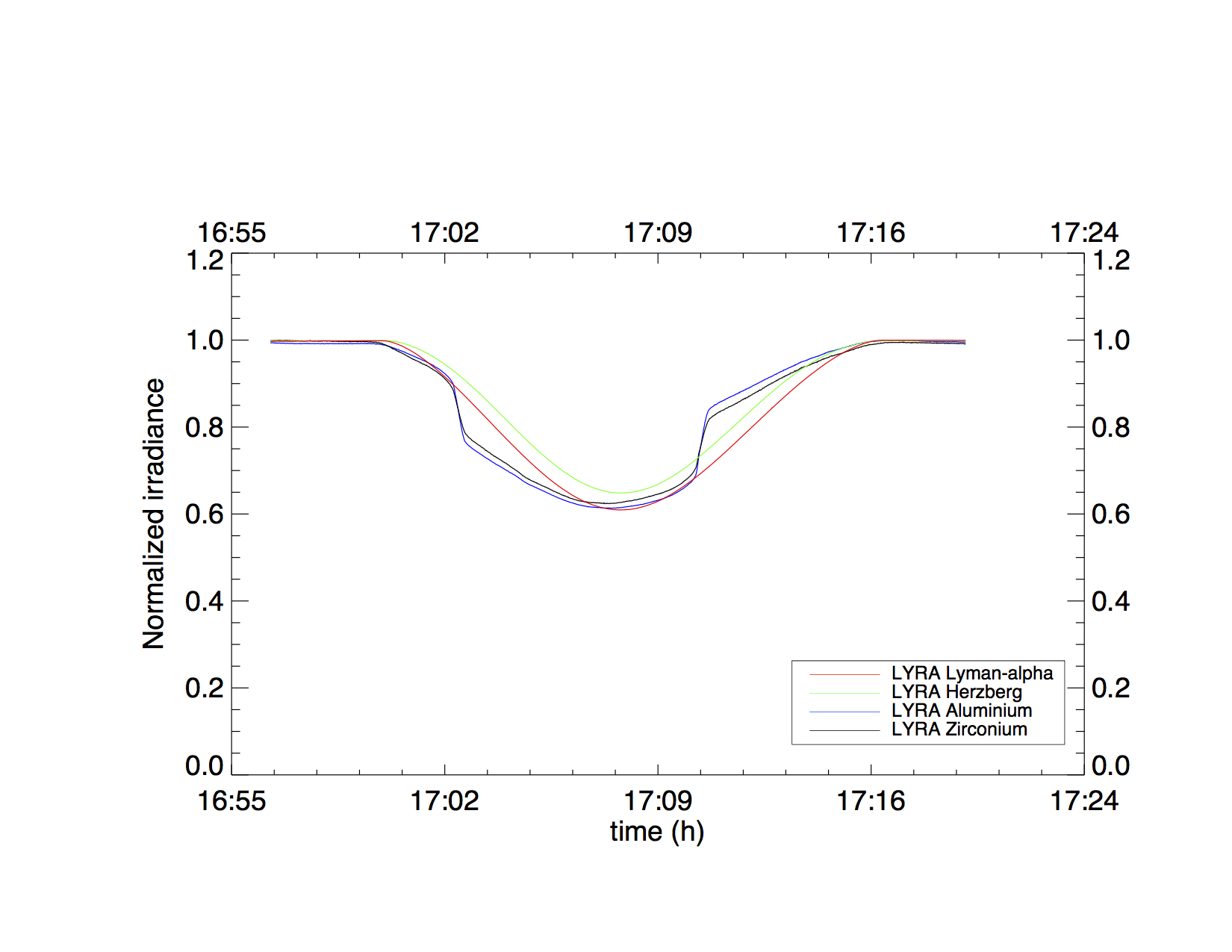
On the ground
The Data
SWAP Mosaics
SWAP Image Data
LYRA Image data

Previous Eclipses
Data Use Policy
Contacting the PROBA2 Team





